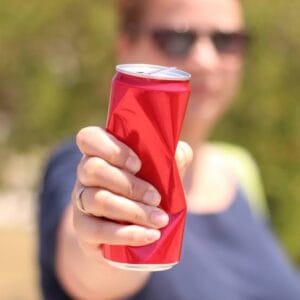National Crush Day – September 27, 2022, history significance why we celebrate
National Crush Day, also referred to as Crush a Can Day, is held every September 27 and highlights the importance of recycling. It’s a reminder that recycling reduces carbon emissions, saves money, and cuts down on waste. National Crush Day is an opportunity for those who care about the environment to advocate for recycling. Let’s all pitch in and do our part
WHEN IS NATIONAL CRUSH DAY 2022?
The importance of ‘Reduce, Reuse, Recycle’ is observed on National Crush Day on September 27.
HISTORY OF NATIONAL CRUSH DAY

In modern society it’s hard to think of a world without cans, they are such a common commodity and so very necessary. They are actually one of the oldest methods of preserving food, predating Mason jars by several decades.
The origin of cans can be dated back to 1795 when Napoleon commissioned 12,000 Francs to anyone who can devise a way of preserving food for his army & navy. After some time, a Frenchman by the name of Nicolas Alpert created the process of sterilization which paved the way for canned goods.
Just nine years later a British merchant named Peter Durand received a patent from King George III for preserving food in tin cans. By 1819 cans were introduced to New York City and quickly became very popular in the United States.
By 1938 the first canned beer was introduced by the Kruger Brewing Company of Richmond, Virginia, called “Krueger Cream Ale.” And by the 1960s the use of tin cans was common for everything from tuna to motor oil.
This type of can was popular because it could be easily molded, could support carbonated pressure, was lighter, and did not rust. However, by 1970, which was also the first year Earth Day took place, recycling started to get much more attention. Today in the United States, 105,784 aluminum cans are recycled each minute — leading to an overall recycling rate of nearly 50%, the highest recycling rate for any beverage container.
Due to the infinite recyclability of aluminum, 75% of all aluminum produced is still in circulation. This means that aluminum cans contain an average of 73% recycled content. Making a can from old cans uses 90% less energy and generates 90% less emissions compared to producing that same can from virgin material. So remember to recycle your cans and try your best to keep our planet clean!
NATIONAL CRUSH DAY TIMELINE
1813
The Can Factory
John Hall and Bryan Dorkin opened the first commercial canning factory in England.
1858
The Can Opener
Ezra J. Warner (Waterbury, Connecticut) patents the first can opener! This was used heavily by the US military during the civil war.
1959
Cash for Cans
Bill Coors’ engineers revealed the first seamless recyclable aluminum can in 1959, and later a program called Cash for Cans offering a penny for each can or glass bottle returned for recycling.
1972
The First 6-Pack
Multi-packs for beverage cans are introduced.
1985
Cans in Space
Astronauts in outer space receive carbonated beverages in cans for the first time.
RECOMMEND STORIES
- Royal Challengers Bengaluru Clinch Maiden IPL Title with Thrilling 6-Run Win Over Punjab Kings
- Remembering Ratan Tata: A Visionary Leader and Compassionate Humanitarian
- National College Colors Day – September 2, 2024: history
- Bison-ten Yell Day – September 2, 2024: history, FAQs
- National Lazy Mom’s Day – September 6, 2024
TRADITIONS OF THE DAY
National Crush Day primarily refers to aluminum cans, but the bigger picture is to be more conscious of our carbon footprint and reduce global wastage for a sustainable future.
Activists, organizations, and the government all participate in campaigns for environmental sustainability and advocate for small lifestyle changes that will result in massive changes. The handy three R’s, Reduce, Reuse, Recycle, are the mantra for the day, and good practices like turning the tap off while brushing your teeth and using a metal straw are highly encouraged and effective. Clean-up drives and fundraisers are hosted by relevant groups, both at the local and national levels.
BY THE NUMBERS
180 billion – the number of aluminum cans produced every year.
6,700 – the number of cans produced every second — enough to go around the planet every 17 hours.
2% – the percentage of the world’s energy use spent on producing aluminum.
5% – the percentage of the energy needed to produce new aluminum from recycled aluminum cans.
Almost 70% – the percentage of aluminum cans that are recycled.
75% – the percentage of all aluminum produced in history still in use.
$700 million – the worth of aluminum cans that Americans throw away every year.
60 – the number of days it takes for used aluminum drink cans to be recycled and placed back on supermarket shelves as new drink cans.
14 million – the amount of fewer dustbins needed if all aluminum cans were recycled in the UK.
500 – the number of years that an aluminum can will stay in a landfill before it oxidizes.
NATIONAL CRUSH DAY ACTIVITIES
Spread the word
Be an advocate for recycling by convincing your friends and family to recycle their used metal. Start a campaign to make sure everyone you know is doing their part to protect the environment.
Make it a game
Remember “kick” the can? How about “crush” the can? Put some fun in recycling by getting the kids together to stomp on those aluminum cans before they go into the recycling bin.
Be an advocate
Research your area’s recycling policies and become an advocate for stronger recycling laws. Help your local elected officials appreciate the need for recycling.
5 CAN FACTS
What they save
Recycling one tin can save enough energy to run a television for 3 hours.
What they earn
Americans earn about $1 Billion a year recycling aluminum cans.
How they melt
Aluminum begins to melt at 1220 degrees Fahrenheit.
Carbonation Nation
The world’s beer and soda consumption uses about 200 billion aluminium cans every year. This is 6,700 cans every second – enough to go around the planet every 17 hours.
Eliminate Our Footprint
2% of the world’s energy use is spent on producing aluminium. Producing aluminium from recycled aluminium cans only takes 5% of the energy needed to produce new aluminum.
WHY WE LOVE NATIONAL CRUSH DAY
It saves money
It takes far less energy to produce cans and other metal storage containers from recycled materials than to make them from scratch. Crushing cans and sending them to the recycling center saves money.
It saves space
The world is dotted with landfills. Garbage has to go somewhere. Crushing cans and putting them out for recycling means less waste and less need for landfills.
It saves the planet
Excessive waste contributes negatively to climate change. Recycling metals reduces carbon emissions and has a positive impact on the environment.








